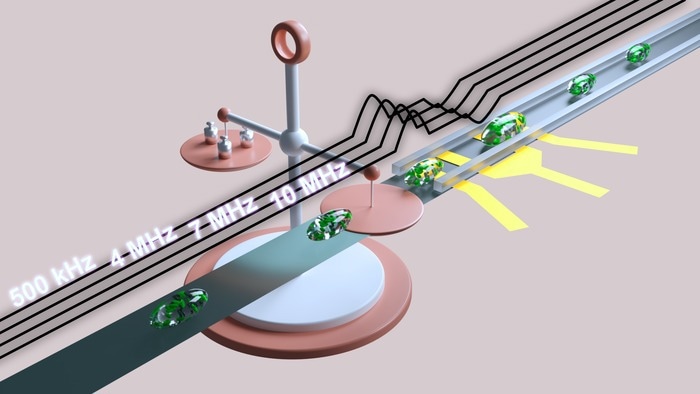Many professions require the ability to pay attention to detail. To analyze individual cells with unprecedented precision, biologists in particular use highly specialized methods and cutting-edge technology.
 Precise total assessment of the cells with impedance signals. Image Credit: Tao Tang, Yaxiaer Yalikun.
Precise total assessment of the cells with impedance signals. Image Credit: Tao Tang, Yaxiaer Yalikun.
One experimental technique that can disclose specific traits of a living single cell is impedance cytometry. Electrical penetration is necessary for this method so that high-frequency current can freely pass through cell membranes without harming the cells.
Scientists from Japan have now identified the ideal circumstances for carrying out impedance cytometry. Their work might enable quick evaluation of cells while they are being cultured in biological experiments.
In a recent study that appeared in Microsystems & Nanoengineering, an enhanced method for determining the morphology and biomass of individual cells using impedance cytometry was presented.
In impedance cytometry, high-frequency voltages are applied to electrodes to quantify complex impedance, which can reveal details about the cell’s effective shape and volume.
Investigators from the Nara Institute of Science and Technology used various voltage signal phases at four frequencies. They demonstrated that the membrane of Euglena gracilis cells can withstand applied voltages at frequencies of about 7 MHz. While volume changes are tracked by lower frequencies, changes in biomass can be observed at higher frequencies.
It has been demonstrated in simulation and experiments that when a high-frequency electrical field enters the cell membrane, the uneven intracellular distribution tilts the impedance pulses to the left or right.
Ultimately, our method for determining the conductivity of the cell membrane relies on the degree of tilt caused by the electrical pulses.”
Yoichiroh Hosokawa, Study Author, Nara Institute of Science and Technology
To comprehend the underlying physical mechanisms of this effect, the group also carried out calibration studies employing beads.
This research enables the easy determination of the electrical penetration of a cell membrane, and the proposed platform is applicable to multiparameter assessment of the organism’s state during cultivation.”
Yaxiaer Yalikun, Study Senior Author, Nara Institute of Science and Technology
For the scalable tracking of biological experiments, this platform can be easily integrated into microfluidic systems.
This new impedance cytometry technique created by the research group headed by Nara Institute of Science and Technology may be able to satisfy the need for an effective and incredibly accurate analysis of living single cells. Future applications could include mammalian cells to track specific membrane alterations in oncogenesis and cell aging.
Source:
Journal reference:
Tang, T., et al. (2022) Assessment of the electrical penetration of cell membranes using four-frequency impedance cytometry. Microsystems & Nanoengineering. doi.org/10.1038/s41378-022-00405-y.